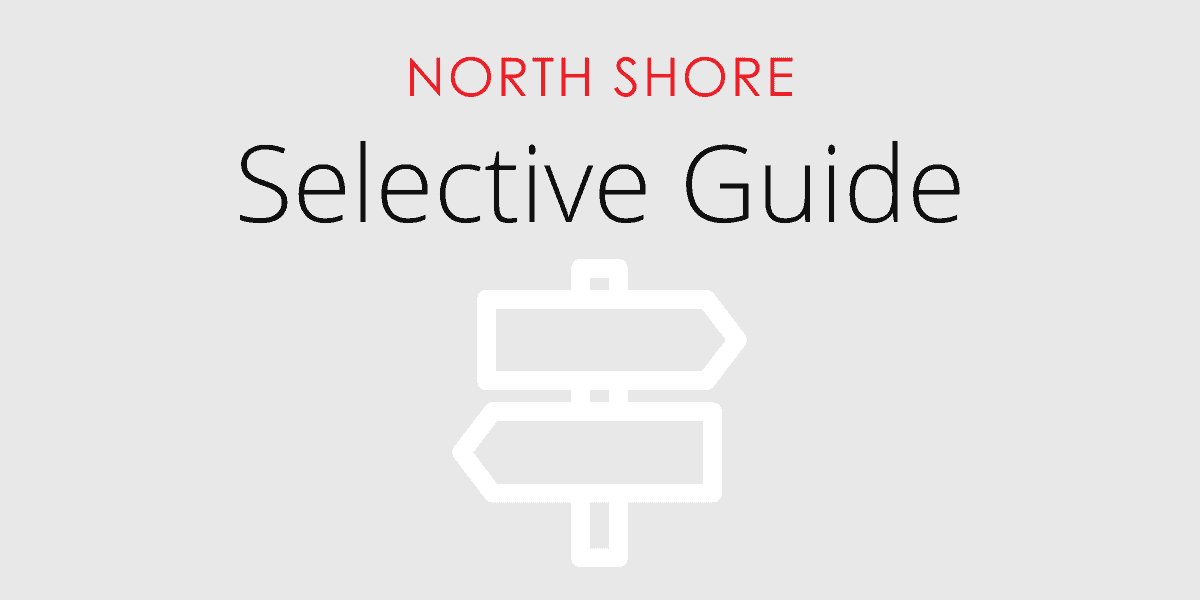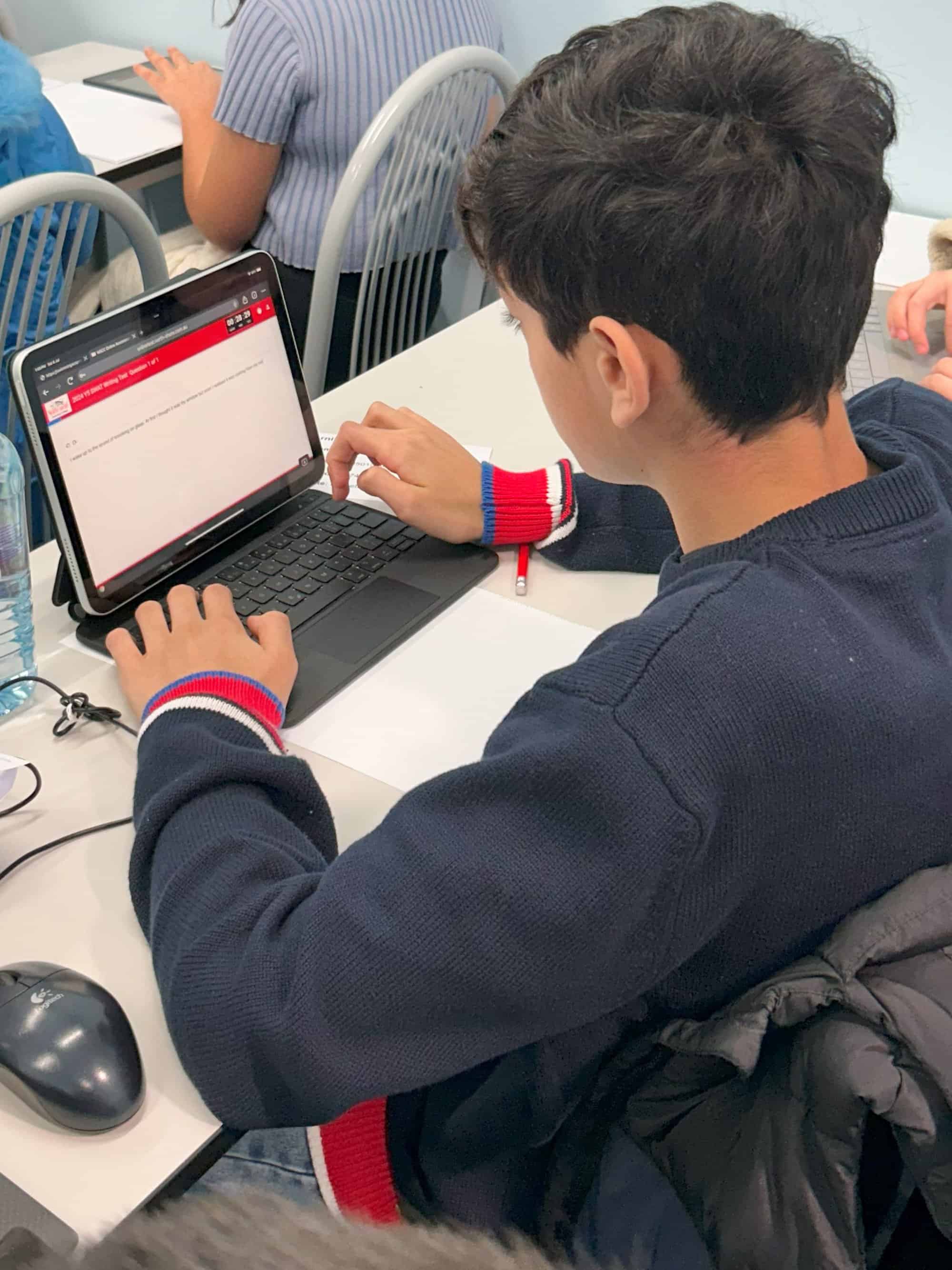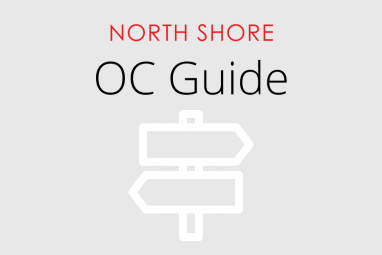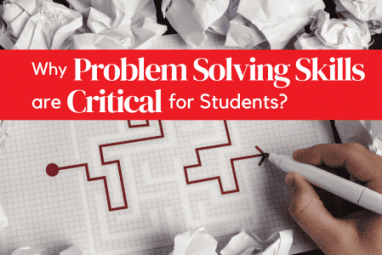[NSW] The Comprehensive Guide to Selective High Schools
Changes to the application process for 2026 entry
From 2025, the placement tests for selective high schools will move from single version paper-based tests to computer-based tests.
There will also be changes to the application process for 2026 entry to selective high schools.
These changes will result in:
- a more engaging experience for students with computer-based testing
- a longer application period for parents and carers to apply
- more choice for parents and carers of when their child will sit a placement test
- outcomes being released earlier to parents and carers.
Computer-based tests in 2025
The placement tests in 2025 will be held at scheduled times over multiple days (Friday, Saturday, Sunday) and conducted mostly in external test centres (i.e. not in schools). Students will be allocated an external test centre within the local area of their current school.
The 2025 selective high school placement test dates are 2-4 May 2025.
A make-up test date will be available for students who were unable to sit the initial test and who have an approved illness or misadventure request. The make-up test date in 2025 is Monday 19 May 2025.
There will be multiple versions of the computer-based test to allow the tests to be conducted over several days. Students will not need to bring their own device to sit the placement tests.
The test structure is not changing in 2025:
- The Selective High School Placement Test will continue to have 4 sections (Reading, Mathematical reasoning, Thinking skills and Writing).
- Parents and carers will be able to request reasonable adjustments for students with disability, medical conditions or temporary injuries to access the test.
- Before the test, students will be given a test admission ticket (previously called a Test Authority Letter). Students must bring their test admission ticket with them to the test.
Test outcomes
Outcomes and placement offers for selective high school in 2026 will be available to parents and carers and schools in Term 3, 2025. The placement test Performance report will remain the same and continue to show how a student performed within performance bands.
Parents and carers will continue to be offered a place based on their child’s test performance and the order of their school choices. Test scores or placement ranks will still not be available or provided.
Applying for entry
Applications will be open each year from November to February (the following year) for both selective high school. Parents and carers will still apply online using the Selective high school application website.
Applications for selective high school entry in 2026 will be open from 7 November 2024 to 21 February 2025. As there will now be a longer application period, the late application period will be replaced with a special consideration process. This is due to the application closing date being closer to the test dates and logistical constraints around organising test centres and devices.
For selective high school placement, parents and carers will continue to apply when their child is in Year 5 and can now apply when their child is in year 6 until the end of Week 4, Term 1.
Note: the application process and timings for entry into a selective high school in Years 8 to 12 remain unchanged. For more information visit Selective high schools – Years 8 to 12 applications.
Key dates – applying for entry in 2026
- 7 November 2024 to 21 February 2025 – parents and carers apply for selective high school entry in 2026.
- 2-4 May 2025 – students sit the selective high school test for entry in 2026.
- 19 May 2025 – make up test date (approved illness/misadventure requests)
- Term 3, 2025 – placement outcomes and offers released to parents and carers
- Term 1, 2026 – students who gain entry begin attending their selective high school
Future placement test dates
| Year | Main test period | Make-up test |
|---|---|---|
| 2025 | Friday 2 May to Sunday 4 May 2025 | Monday 19 May 2025 |
| 2026 | Friday 1 May to Sunday 3 May 2026 | Friday 15 May 2026 |
| 2027 | Friday 30 April to Sunday 2 May 2027 | Friday 14 May 2027 |
| 2028 | Friday 5 May to Sunday 7 May 2028 | Friday 19 May 2028 |
What are Selective High Schools?
Selective high schools cater for academically gifted students with high potential who may otherwise be without sufficient classmates of their own academic standard. Selective high schools help these students to learn by grouping them with students of similar ability, using specialised teaching methods and materials. Selective high schools are unzoned so parents can apply regardless of where they live.
There are 4,248 places available in selective high schools across NSW for entry to Year 7. There are two main types of selective high schools offering Year 7 placement, fully selective and partially selective. They are located throughout NSW.
Types of Selective High School?
There are 4 types of selective high schools:
- 17 fully selective high schools where all classes are academically selective.
- 4 agricultural high schools which are fully selective and have a special focus on agriculture.
- 25 partially selective high schools in NSW where one or two classes are selective while other classes are non-selective for local students.
- A virtual class, Aurora College, is available for rural and remote students in 182 authorised host schools.
The students in the selective classes participate in separate English, mathematics and science classes. They generally join the non-selective students for classes in other subjects.
Read more: What are Selective Schools? | NSW Department of Education
Should I consider attending a Selective school?
Giftedness
Selective Schools are designed to provide enhanced learning opportunities for high potential and gifted students, i.e. those with very high to extremely high academic merit (in the top 9% of their cohort).
High potential and gifted learners may demonstrate curiosity, fast-paced ease of learning, intense concentration in new learning or areas of interest, a sophisticated sense of humour, creative and critical thinking skills, high expectations, and other intellectual, creative and socio-emotional characteristics.
Read more: High Potential and Gifted Students | NSW Department of Education
Eligibility for Year 7 Selective Entry

Students applying to enter Year 7 in 2026 should be in Year 5 in 2024, and in Year 6 when they sit the placement test in 2025. If the child is outside the usual age range or is in a school year other than Year 5 when applying, parents should explain the reasons. Selection committees may ask for further information when considering the application.
Students already in Year 7 at the time of the test can be considered for placement in Year 7 the following year only if there are extenuating circumstances. A full explanation, supporting documentation and the principal’s support for the repetition are required. Selection committees will determine whether such applications will be accepted.
If parents are seeking acceleration, selection committees will need to see evidence of consultation with the school principal. The student would need to gain a score which places them in the top half of the students offered placement in their chosen selective high school. On a statewide basis, only one in 200 students would generally be capable of acceleration in all subjects.
A student’s family must be living in NSW by the beginning of the school year of entry.
A student must be an Australian citizen, a permanent resident of Australia or a New Zealand citizen to enrol in a selective high school.
Read more: Information for Applicants | NSW Department of Education
Eligibility for Year 8-12 Selective Entry
Available places in Years 8 to 12 depend on the number of students who have left the school. Each school is different, some may have no vacancies in some years of schooling, some create reserve lists in case of future vacancies, and others may establish additional places in some years. Contact individual selective high schools for further information about availability.
- Students cannot automatically transfer between selective high schools. If a student wishes to change from one selective high school to another, an application must be made.
- Applicants complete the application form that is available in late June each year and submit it to up to three selective high schools. A separate application must be submitted to each school.
- Individual selective high schools manage their own placement and any reserve lists they may have.
- A student’s current pattern of study will be taken into account when being considered for placement. Available patterns of study at selective high schools may vary from current choices.
- Any applications to repeat a school year should be discussed with the principal prior to submission.
- An applicant on a reserve list remains on that reserve list only for the specific year applied for.
- If unsuccessful in one year, parents can apply for placement in subsequent years when applications are open.
Read more: Years 8 to 12 | NSW Department of Education
Advantages and Disadvantages of Selective Schools
Selective schools provide a competitive academic environment and are focused on helping their students to achieve strong results. The proof is in the pudding, with these schools often producing some of the highest Year 12 results. But competitiveness can be a two-edged sword. What is healthy competition for some students can be a high-pressure, potentially stressful environment for others. You and your child should do research on your desired schools, ask about other people’s experiences and consider your individual circumstances.
You can also come along to one of our Education Seminars to learn more about applying for Selective High Schools, Scholarships and other educational topics.
How many Selective High Schools are there?
There are currently 17 fully selective high schools, 27 high schools with selective classes (partially selective), 4 agricultural high schools and a virtual selective class provision offering selective placement in Year 7 for entry in 2026.
School name |
Number of places |
| Alexandria Park Community School + | 30 |
| Armidale Secondary College | 30 |
| Auburn Girls High School | 30 |
| Aurora College (Virtual) # | 90 |
| Baulkham Hills High School | 180 |
| Blacktown Boys High School | 30 |
| Blacktown Girls High School | 30 |
| Bonnyrigg High School | 60 |
| Caringbah High School | 150 |
| Chatswood High School | 60 |
| Elizabeth Macarthur High School | 60 |
| Farrer Memorial Agricultural High School (Boarder places) | 66 |
| Farrer Memorial Agricultural High School (Day places) | 44 |
| Fort Street High School | 150 |
| Girraween High School | 120 |
| Gorokan High School | 30 |
| Gosford High School | 180 |
| Grafton High School | 30 |
| Granville Boys High School | 30 |
| Hornsby Girls High School | 120 |
| Hurlstone Agricultural High School (Day places) | 120 |
| Hurlstone Agricultural High School (Female boarder) | 15 |
| Hurlstone Agricultural High School (Male boarder) | 15 |
| James Ruse Agricultural High School | 120 |
| Karabar High School | 30 |
| Kooringal High School | 30 |
| Macquarie Fields High School | 90 |
| Merewether High School | 180 |
| Moorebank High School | 60 |
| Normanhurst Boys High School | 120 |
| North Sydney Boys High School | 150 |
| North Sydney Girls High School | 150 |
| Northern Beaches Secondary College Manly Campus | 120 |
| Parramatta High School | 60 |
| Peel High School | 30 |
| Penrith High School | 150 |
| Prairiewood High School | 60 |
| Richmond High School – Richmond Agricultural College | 30 |
| Rose Bay Secondary College + | 60 |
| Ryde Secondary College | 60 |
| Sefton High School | 88 |
| Smiths Hill High School | 120 |
| St George Girls High School | 150 |
| Sydney Boys High School | 180 |
| Sydney Girls High School | 150 |
| Sydney Secondary College Balmain Campus * | 60 |
| Sydney Secondary College Leichhardt Campus * | 60 |
| Sydney Technical High School | 150 |
| Tempe High School + | 60 |
| Yanco Agricultural High School (Female boarder) | 30 |
| Yanco Agricultural High School (Male boarder) | 30 |
Note:
+ Alexandria Park CS, Tempe HS and Rose Bay Secondary College have targeted places available for Aboriginal and Torres Strait Islander students.
* Sydney Secondary College Balmain and Leichhardt campuses offer places in Years 7-10. Students from these campuses will generally go to Sydney Secondary College Blackwattle Bay Campus for Years 11 and 12.
# Only students who will be enrolled in Year 7 in government high schools in rural areas may apply for Aurora College, the virtual selective high school. This excludes fully and partially selective high schools. A list of participating schools is available at: https://education.nsw.gov.au/public-schools/selective-high-schools-and-opportunity-classes/year-7/information-for-applicants/aurora-college/rural-and-remote-high-schools
View a list of selective high schools and their locations, sorted by type (agricultural, fully or partially selective) and gender (co-educational, male-only or female-only).
How are placement decisions made?
Students are ranked in order of academic merit based on their performance in the placement test. Students are placed according to their academic merit to fill the number of vacancies at each school.
For some applicants, other evidence of academic merit may be used in the placement process. For example, interstate and overseas applicants who are not able to be in NSW for the placement test submit a Report of academic merit that includes an IQ report. The Equity Placement Model helps to make placement fairer for underrepresented student groups.
Estimated Entry Bands for Selective Schools Entry
The Department of Education no longer publicly discloses entry scores.
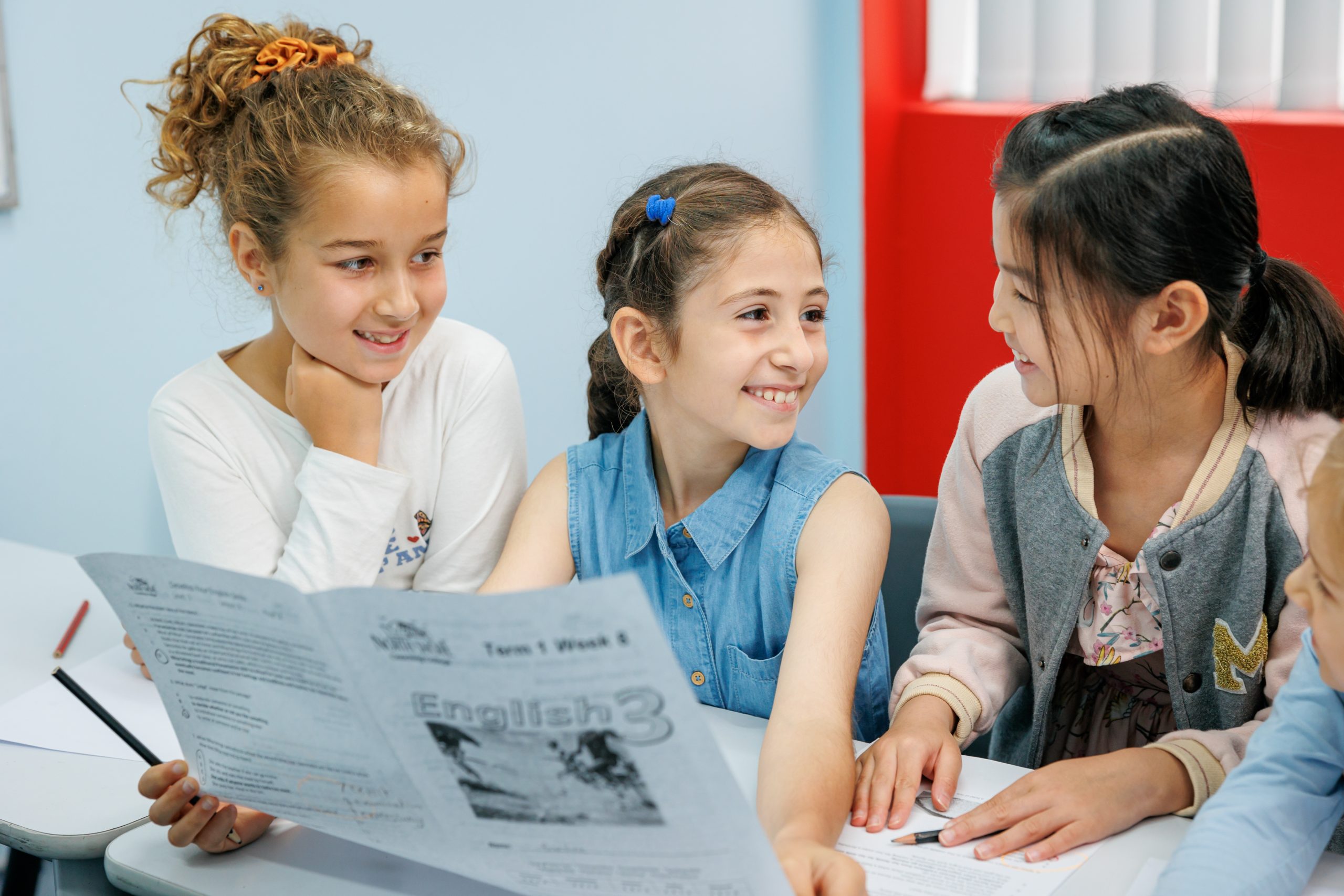
How should I choose which Selective schools to apply for?
Applicants can choose up to three selective high schools and must list these in order of preference.
Where students qualify for entry to two or three schools they will get an offer only to the highest listed school for which they qualify. Therefore it is important to list the preferred school at the top.
A student can qualify for an offer to choice 2 or 3 and also be on a reserve list for choice 1. If a student qualified for all choices they would not be able to decline the highest choice offer and choose a lower choice instead.
You cannot change selective school choices after the placement outcome is released, except in limited extenuating circumstances with well-documented evidence. Any request to change choices at that time would need to be approved by the High Performing Students Team.
Prior to choosing and listing your schools, you should consider your own individual circumstances.
- List only the school or schools you would like your child to attend.
- Consider available transport and the travel time for the student. The selection committee does not consider distances, travel times or transport arrangements from the student’s home to the selective high school except for boarder agricultural high schools and Aurora College.
- Additional information, medical report and payment of boarding fees are required if applying for a boarder placement at an agricultural high school.
- If applying for the specialist Conservatorium High School, you can also choose three selective high schools.
- Tuition at selective high schools is free (unless boarding) but schools may ask for a voluntary contribution to cover services such as a library, textbooks and other curriculum-related resources. Schools may also ask for contributions to cover the purchase of materials in certain subjects and costs associated with sports or excursions.
What is the Selective School selection process?
Students are ranked in order of academic merit based on their performance in the placement test. Students are placed according to their academic merit to fill the number of vacancies at each school.
To promote fair and equitable access for all high potential and gifted students, the Equity Placement Model helps to address unintended barriers to entry for students from low socio-educational advantage backgrounds, Aboriginal students, rural and remote students, and students with disabilities.
Learn more about the Equity Placement Model.
Where a student has missed the test for a valid reason, alternative evidence of academic merit will be used to rank the student. This rank will then be reviewed by the selection committee to make placement decisions.
Performance report
The Performance report shows how your child performed in comparison to the other students who took the test that year.
For each of the test components, the report shows where your child performed in one of four bands:
- top 10% of candidates
- next 15% of candidates
- next 25% of candidates
- lowest 50% of candidates
Download a Performance report example [PDF, 235KB].
It is important to understand that the Performance report does not show the percentage of correct answers a child has achieved for any of the test components, but rather how many other students performed within the same range.
The Performance report does not provide an individual’s test scores or placement rank.
Test scores or placement rank are not available.
Read more: The Selection Process | NSW Department of Education
What is the Selective High School Placement Test like?
A new Selective High School Placement Test was developed for 2021. Students are encouraged to familiarise themselves with the sample test ahead of the next Selective High School Placement Test. The test has a greater emphasis on thinking skills, mathematical reasoning and problem-solving. It also adjusts and balances the weighting given to mathematics, reading and thinking skills test components.
These changes are in response to the findings of the 2018 Review of Selective Education Access report, commissioned by the NSW Department of Education.
In 2025 (for Year 7 entry in 2026), the placement test will be in a computer-based format.
- Reading (40 min, 30 answers across 16 questions, Weighting 25%)
- Mathematical Reasoning (40 min, 35 questions, Weighting 25%)
- Thinking Skills (40 min, 40 questions, Weighting 25%)
- Writing (30 min, 1 open-response question, Weighting 25%)
Reading Test
The reading test consists of 16 questions (2 questions have multiple parts to answer). Students have 40 minutes to complete the test. The questions are based on a diverse range of texts and assess a range of reading skills.
The reading test questions are based on different genres such as non-fiction, fiction, poetry, magazine articles and reports.
Mathematical Reasoning Test
The mathematical reasoning test consists of 35 questions. Students have 40 minutes to complete the test. The questions are all multiple choice and students will be asked to select the correct answer from 5 options.
The mathematical reasoning test assesses the student’s ability to apply mathematical understanding and knowledge to problems, with questions drawn from a range of mathematical content areas.
Calculators are not used in the mathematical reasoning test.
Thinking Skills Test
The thinking skills test consists of 40 questions. Students have 40 minutes to complete the test. The questions are all multiple choice and students will be asked to select the correct answer from 4 options.
The thinking skills test assesses the student’s ability in critical thinking and problem-solving. There are a range of different question types in the test.
No previous knowledge is required for this test.
Writing Test
The writing test consists of one set writing task. Students have 30 minutes to complete the test. The test assesses the student’s creativity of ideas and ability to write effectively for a purpose and audience. The test will also assess grammar, punctuation, spelling and vocabulary.
Read more: The Test | NSW Department of Education
How can I prepare my child for the Selective test?
It’s never too early to start thinking about boosting your child’s academic journey, and it’s never too late to make a difference by supplementing their education with external coaching. That said, it’s generally more effective to work consistently over a longer period of time than (just) to prepare intensively in the lead-up to examinations. If you think your child would benefit from regular, personalised learning outside of school, weekly tuition might suit you.
Exam Preparation Programs
In terms of the Selective test specifically, early Year 5 is a good time to begin preparation, giving your child approximately a year to develop their knowledge and skills. The changes (such as the introduction of the Thinking Skills section, and the increased weighting of the test component) mean it is more important than ever to be prepared for the Selective School test. A small number of sample tests are available from the official website, but the best way to prepare is through North Shore Coaching College’s Year 5 and Year 6 Fastrain programs and Selective School Exam Preparation Program. We provide expertly developed courses focusing on English, Mathematics, Thinking Skills and Writing (the four components of the Selective School test). Mock tests & review sessions are regularly provided as part of the Programs, as well as personalised homework help, and additional exam preparation workshops.
SWAT Mock Exam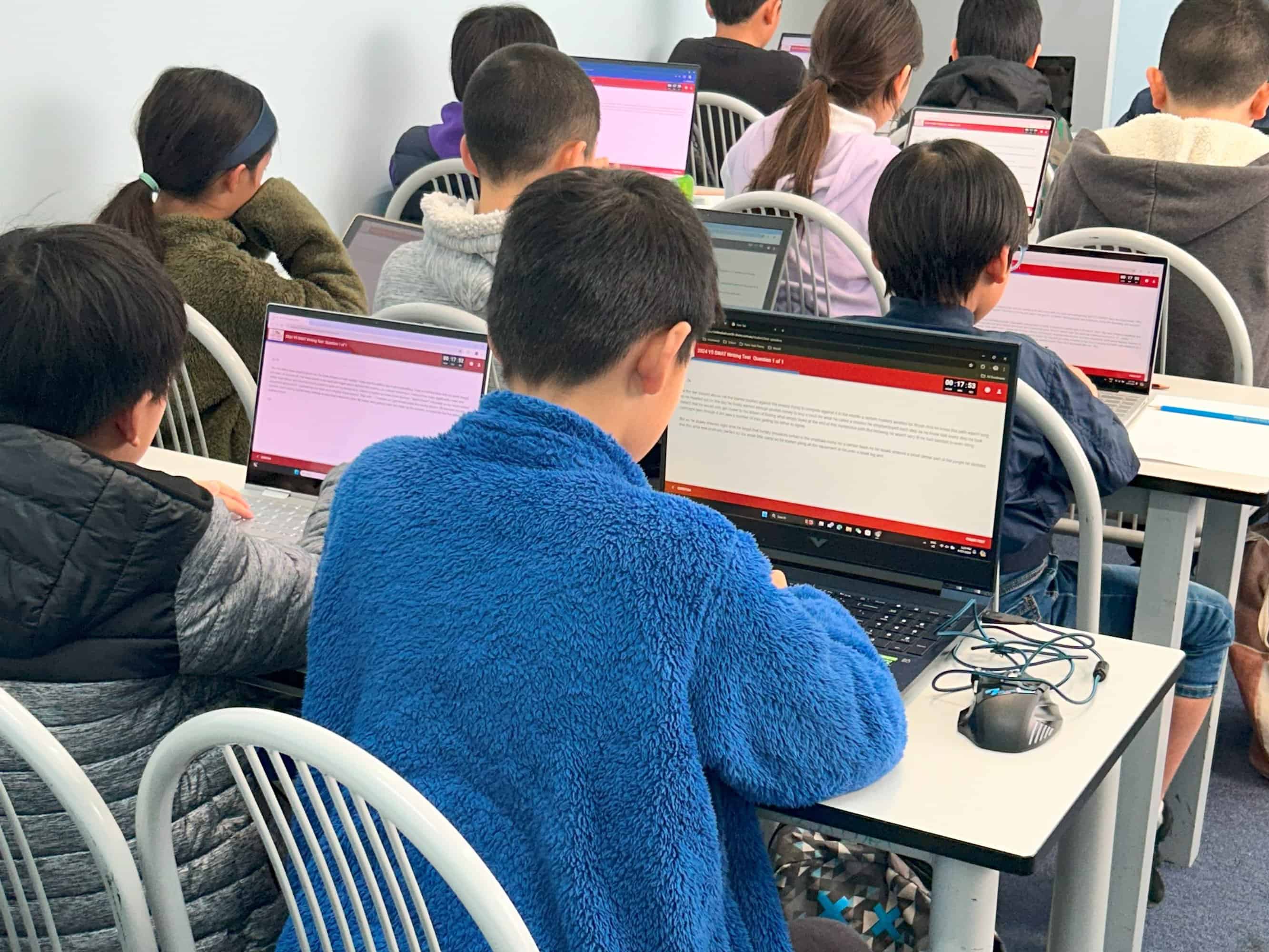
Through North Shore Coaching College’s over 30 years of educational experience, we have found that practising sitting an examination in a test environment reduces test anxiety and improves performance when it comes to any exam. The 2025 SWAT MOCK EXAM is on Sat, 5 July 2025
Register for SWAT

About North Shore Coaching College
North Shore Coaching College is Australasia’s leading institution specialising in coaching and tuition with over 65 campuses across Australia and Hong Kong. Established since 1991, we have been delivering high-quality, affordable educational services with no hidden costs for students from junior to high school. Our teaching methodology is optimised, with approximately two-thirds of the time spent teaching and the remaining for class practice and individual attention. This learning process encourages creativity, open discussion and lateral thinking. At North Shore, we also assist students to develop effective time management, self-motivation and self-direction in studies which increases discipline, confidence and communication skills. Our goal is to prepare your child to be ‘results-oriented’ with an exam-focused mind to succeed. Indeed, we have many proven success stories delivering “Tuition That Works”. Thousands of North Shore students achieve in winning school scholarships, gaining entry to selective high schools, and moving on to distinguish themselves at Australia’s most respected universities. Read more about the awards and success stories here.


